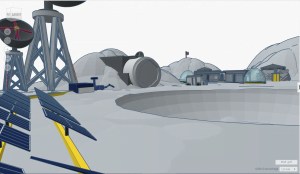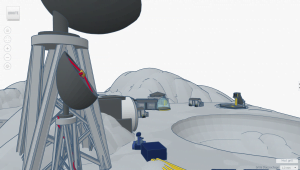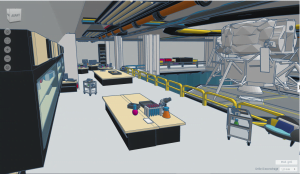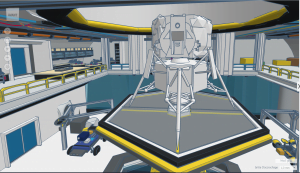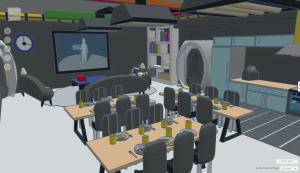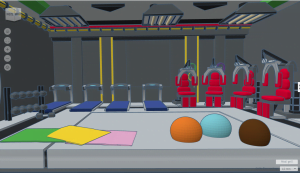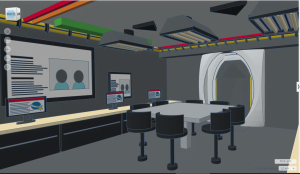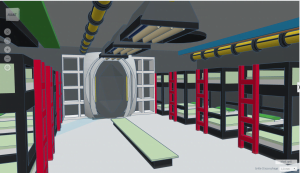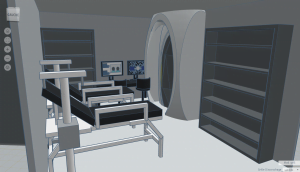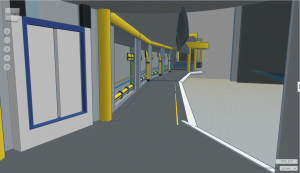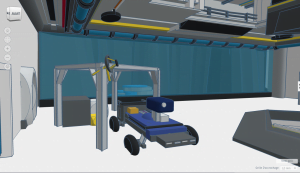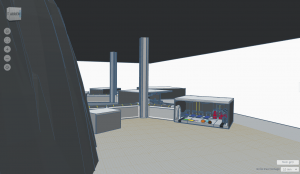Moon Camp Explorers Gallery 2020-2021
In Moon Camp Explorers each team’s mission is to 3D design a complete Moon Camp using Tinkercad. They also have to explain how they will use local resources, protect astronauts from the dangerous of space and describe the living and working facilities.
Team: The “Space Life Research” Team
Casavant Saint-Hyacinthe Canada 14
External link for 3d
|
Project description
The “Space Life Research” base will be able to accommodate astronauts and researchers: in addition to being a base, it will also be a research center and a laboratory. Indeed, we will be specialized in the search for water on the moon and in the discovery of this territory which is still unknown to us. Also, we want to discover the origin of the traces of water on the moon. For example, does it come from meteorites or from its terrestrial origins … In addition, scientific research will all be done near a crater. In fact, our lunar base will be built directly on the B3-A-21 crater, allowing scientists to have direct contact with areas containing ice. Our home will be powered by solar panels installed on the surface to supply energy to our various installations. Due to the strong radiation of the sun at the North Pole, we will have a large reserve of energy stored in batteries. In addition, for our protection and to facilitate our way of living, some parts of the base will be under the surface of the moon. So, all the departments and other parts of our lunar base will be built sheltered from different dangers that reserve the surface of the moon and the rest of space. Eventually, researchers and astronauts will have access to robotic and computer assistance. Indeed, a robot will be able to do the physical work instead of the staff and the various softwares and programs will help them in their analyzes. |
|||
|
Where do you want to build your Moon Camp?
Close to the Lunar Poles Why did you choose this location?
We want to build our lunar camp at the north pole of the moon because we want to do our research near a crater of frozen water. In fact, by sitting next to it, we will need less energy and we will save time. For example, the crew will not need to travel long distances to start their working day because they will be within reach of the crater. Even though we are building the base and the research center there, we will be installing solar panels where there is the most radiation from the sun (so also at the north pole). This is because the sun shines all the time in this precise location, so we will probably use less energy to illuminate the lunar soil. This will allow us to have even more energy reserves. Also, even though the temperatures are low at the moon’s north pole, it is not the coldest and it will be a good place to learn about the water that is there. Eventually, part of our moon base will be underground so the crew will be protected from the various dangers surrounding the moon. How do you plan to build your Moon Camp? Which materials would you use?
The majority of the lunar camp will already be built when the crew arrives to allow them to settle in more quickly and begin their research. To provide protection against UV rays and the impact of space waste, the elements of the lunar camp that will be on the surface of the moon will be constructed from 20 centimeters thick polyethylene. All doors and walls will be airtight and solid. All materials will have been tested for meteorite impacts. If the base is damaged, astronauts can repair it with excess building materials, but the base will mostly be built below the moon’s surface for better protection. Indeed, the materials come from the Earth so it will be necessary to build the camp during other trips. Some objects will be built using a 3D printer and others will be inflatable to save space. Explain how your Moon Camp will provide the astronauts with:
|
|||
|
Water
|
Food
|
Electricity
|
Air
|
|
For the survival of all living things, water is an essential and vital resource. For this reason, our base will be equipped with a filtration and purification system to recycle urine and dirty water used by the crew (dishes, toilets, washing, etc.). This way, there will be no waste and we can reuse the water. Another way that we will be able to access water will be through the research that we are going to do in the frozen water crater. If we can find clean drinking water, we can process it and then use it in day-to-day activities at the base. In addition, water will be sent to them on resupply missions to make sure their lives are not in danger. |
The food supply will be done in different ways. First, there will be a certain amount of freeze-dried food that will be sent to the base before the astronauts leave. The crew will just have to add a small amount of water to eat it. It will be a food reserve while awaiting the results of the harvest. Indeed, the base will be equipped with greenhouses to provide more diversified food in the longer term. On the other hand, it will take a certain time to be able to consume the food that will grow in the greenhouses. These will be equipped with a system that will hide the sun to replicate night phases and ensure the best possible environment for the survival of the plants. Astronauts are not going to depend on greenhouses as freeze-dried food will be sent to them on resupply missions so as not to deplete the earth. |
Much of the electricity supply will come from solar energy. It will be stored in batteries to always have access to electricity. The solar panels presented on the surface of the moon will be built with resistant materials so that meteorite impacts do not affect their efficiency. The energy now transformed and stored in the reservoirs can be used to power the base and help the research. In addition, a certain amount of energy will be sent to the moon in batteries in case of an emergency. Also, our robots and vehicles will also be equipped with solar panels to provide them with energy and store it. |
Astronauts will need air to be able to live on the moon. Aside from the air in their spacesuits, they will need oxygen when they are inside the base. To keep the necessary amount of air required for their survival in the base, we will use efficient materials that will not let air through. The base will be designed to be safe for astronauts and will ensure the camp is waterproof. In addition, our base will be equipped with an air recycling system. The European space agency recently developed a system, called ACLS, to recycle CO2 into O2. Implemented on an experimental basis on the station, this system concentrates carbon dioxide and transforms it into water (H2O) and methane (CH4) thanks to the addition of dihydrogen (H2). The latter is released into space but the water is transformed into oxygen (O2) and into dihydrogen reused for the transformation of CO2 into water. They will also have access to deliveries of oxygen tanks. In short, we will use different means so as not to waste air. |
|
Describe a day on the Moon for one of your Moon Camp astronauts
We want to provide the best possible quality of life for the astronauts as well as the rest of the crew who will be living in our moon base. Thus, for proper operation, we will provide the best possible sleeping comfort by installing mattresses made from recycled plastic. In addition, to allow the crew to stay in shape, we will build a dedicated sports area with the equipment provided. So, after a good night’s sleep, the astronauts will have lunch and can go do some sports. Afterward, they will perform their daily tasks such as cleaning and maintaining the base. Then some of the crew can check the condition of the base. After dinner, they can continue their research on the ice-water crater. At the end of the day, they should report back to the team that remained on Earth to discuss the progress of the research and some possible issues. In the evening, they can program the robots and computers for the night and the next day so that they can finally relax a little. |
|||


